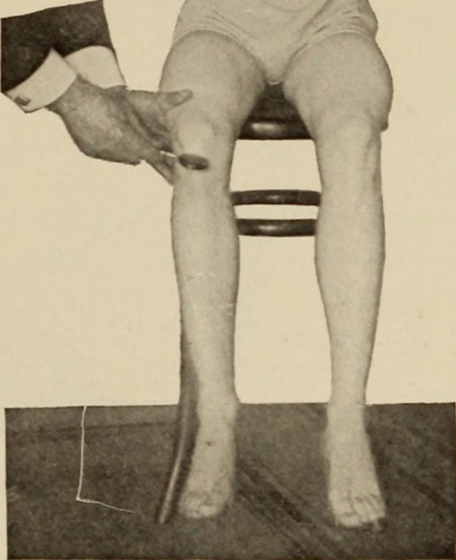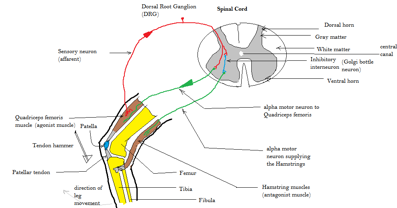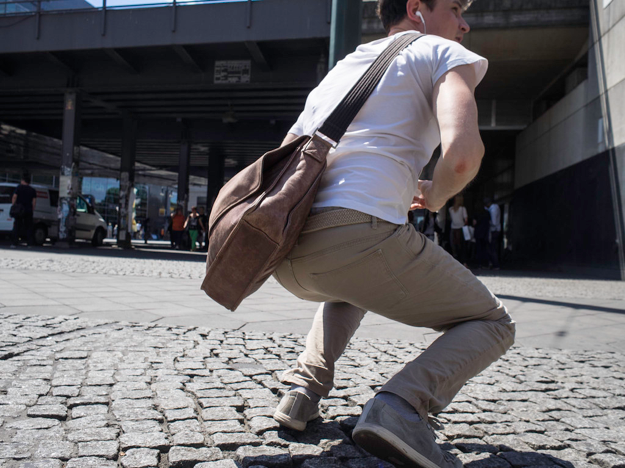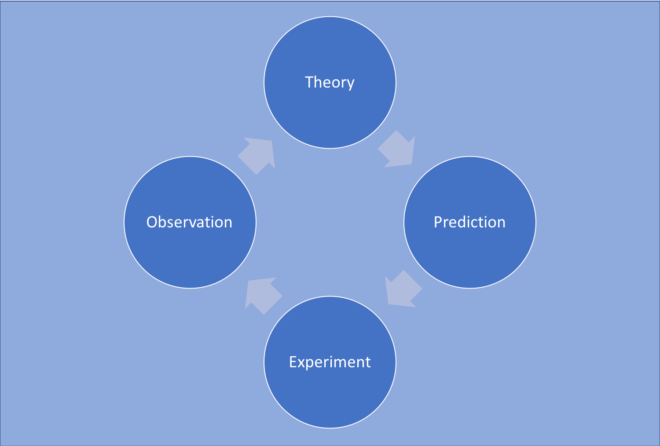Are there hierarchical adaptations in the nervous system that help rapidly adapt responses to changing circumstances? A hypothetical experiment with the patellar reflex can help answer the question.
For those who have been following my posts it has become clear that my goal is to promote fast adaptations of neurons as the key physiological mechanisms for explaining how mental operations emerge in the physical brain. I have been outspoken about the pitfalls of the classical theory (here, here and here) and have proposed that fast adaptations at different levels can fix those problems by adjusting activation flow across the nervous system (here, here and here). The next question is then: How are fast adaptations exactly supposed to work in the brain? What kind of electrophysiological experiments should we design to test the theory of hierarchical adaptations? And most importantly, what do we expect to find in those experiments?
An attentive reader of my blog series would be right to say: Hey Danko, you wrote that if a theory does not make predictions that have the potential to disprove that theory, there is not really a theory to speak of. You used this argument to criticize connectionism. Show us how hierarchical adaptations do better. What experiments need to be created in an attempt to disprove the assumptions of your theory?
Starting Simple with Reflexes
 To understand possible approaches to experiment with fast adaptations, let us begin with the simplest aspects of the nervous systems—reflexes. In particular, let us see what kind of experiments we could perform to test the hypothesis that the patellar reflex is being regulated by fast adaptations. As you likely know, patellar reflex is a test that neurologists love to perform with their famous hammer: They hit you at the right spot just below the knee and your lower leg involuntarily jerks high up into the air. This “knee-jerk” reflex involves two neurons both operating at the level of the spinal cord, one pseudo-unipolar sensory cell whose function is to fetch signals from muscle spindles about quadriceps being stretched (induced for example by the doctor’s hammer) and one motor neuron, whose job is to contract the same muscle back. Therefore, this reflex works like a regulator of the degree to which a muscle is stretched. As soon as some force stretches the muscle, the reflex sets force to bring the muscle back into original stretch. This in turn brings your body back into the position. You don’t fall.
To understand possible approaches to experiment with fast adaptations, let us begin with the simplest aspects of the nervous systems—reflexes. In particular, let us see what kind of experiments we could perform to test the hypothesis that the patellar reflex is being regulated by fast adaptations. As you likely know, patellar reflex is a test that neurologists love to perform with their famous hammer: They hit you at the right spot just below the knee and your lower leg involuntarily jerks high up into the air. This “knee-jerk” reflex involves two neurons both operating at the level of the spinal cord, one pseudo-unipolar sensory cell whose function is to fetch signals from muscle spindles about quadriceps being stretched (induced for example by the doctor’s hammer) and one motor neuron, whose job is to contract the same muscle back. Therefore, this reflex works like a regulator of the degree to which a muscle is stretched. As soon as some force stretches the muscle, the reflex sets force to bring the muscle back into original stretch. This in turn brings your body back into the position. You don’t fall.
Does this Reflex Adapt to Changing Circumstance?
Let’s say you are standing, and your friend Sally hands you a 10-kilogram heavy backpack. As soon as you grab the backpack a significant additional weight has been added to your body—a weight that your quadriceps need to support—i.e., not allow your body to collapse under the weights. With more weights, quadriceps muscle also must push harder. How does the muscle know when to push harder? Well, it gets help from the nervous system—from its spinal cord to be more precise. Among many other jobs that spinal cord performs, it also watches the stretch. If there is a signal indicating that a muscle is being extended, an instruction is being sent to contract the muscle back. That way, the muscle pushes harder when needed.
An important aspect of this force-regulation function is that this reflex, if it is to be useful, cannot be expected to work always in a same fixed manner; that is, the reflex cannot have one fixed transfer function such as for example: “Add 10 Newtons of force for each 1 millimeter of muscle stretch.” Rather, the extent of the reflex must be adjustable according to the needs of the current situation; for example, the reflex vigor may depend on how much weight we carry at a given moment.
Not only can our body change weight in a slow manner (kids growing, adults making dietary changes) but also the weight carried by our legs can change in a matter of seconds, as seen in the backpack example above. After you have put on your backpack and started hiking, your body becomes a different mechanical system than it was a minute ago without the backpack. The gait and body posture all need adjustments and so does the patellar reflex—at least this is our testable hypothesis.
Measuring Adaptation in a Motor Neuron
 Figure 1. Circuits involved in the patellar reflex.
Figure 1. Circuits involved in the patellar reflex.
Let us assume that we have a setup in which we can at will stimulate the uni-polar sensory cell of the patellar reflex and in the same time record the outputs from the motor neuron of the same reflex (see Figure 1). In practice, stimulating a single sell would not affect much the actual reflex as there are 100s of sensory cells involved in that reflex and there are even more motor neurons driving the stretch of a muscle. So, in practice, if we stimulate a single cell, we may not interfere much with the behavior of the person, and yet we may be able to learn whether and how these cells rapidly adjust their response properties.
We will then perform this stimulation of the sensory cell at random times when the person is doing all sorts of different kinds of activity – carrying a backpack, walking with slow pace and fast pace, running and jumping like a rabbit, in a crouch and in uphill and downhill terrains. We will then correlate the vigor of our experimentally induced response (i.e., the stimulus-response function) with the particular situation. (Of course this is a hypothetical experiment ignoring any technical difficulties or even ethical issues that may arise from the experimental design. For realistic experiments, the reader is advised to read a book chapter that I wrote for one neuroscience experimental book (Nikolić 2016)). If there is adaptation of the motor neuron, the theory would predict the following:
Prediction 1: There will be changes in the stimulus-response function; the input-output function of spinal neurons will not be fixed but will adjust in situation-dependent way.
Prediction 2: Generally, adjustments will be such that response of the motor neuron is more intensive in those situations in which more force is needed for walking.
What would we expect to see?
For example, let us say that we stimulate the sensory neuron with 3 units of stimulation in two different situations, once when the person is standing free of any additional weight and once holding additional 10 kg of weight. We should observe different outputs from the motor neuron, the firing rate being consistently higher whenever the muscle needs to support larger weight.
Acc ordingly, we may observe a similar increase in the response vigor of these regulating neural circuits when a person is holding a position in mid-air between a full crouch and standing, when more force is needed, as opposed to simply standing straight where much less force is needed.
ordingly, we may observe a similar increase in the response vigor of these regulating neural circuits when a person is holding a position in mid-air between a full crouch and standing, when more force is needed, as opposed to simply standing straight where much less force is needed.
In other words, the prediction is that the patellar reflex will be adaptive, and that these adaptations will dynamically support the walking demands that the person encounters. These adaptations will be quick, occurring within a second or shorter.
An empirical question is: While holding such a position, do spinal neurons involved in the patellar reflex adjust their response properties as to support holding that posture?
If the responsiveness of neurons forming the patellar reflex turns out to stay fixed or, if it changes, but the correlation to the weights is zero, then the hypothesis promoted here needs be rejected. The hypothesis can be rejected for the patellar reflex. Of course, one cannot immediately reject the hypothesis for all other parts of the nervous system but, nevertheless, such a negative result would be a serious blow for the theory of hierarchical adaptations (aka, practopoiesis). I think science can make best progress if we create theories that make predictions that can refute the theory (unlike connectionist theories which do not make predictions).
Reference
Nikolić, D. (2016). Testing the theory of practopoiesis using closed loops. In Closed Loop Neuroscience (pp. 53-65).
This is a part on the blog series on the theory of hierarchical adaptations (aka, practopoiesis) by Danko Nikolić. To see the entire series, click here.

















I’ve studied reactions to unexpected events and have concluded the closed loop theory is unworkable. 1. It is too slow to predict the rapid reactions to unexpected events and 2. there is some intelligence involved in rapid reactions to unexpected events, meaning the brain must be involved which we also know is too slow. I am working on an atemporal particle theory which seems to explain how the human can react so fast to an unexpected event and it even suggests a step toward understanding consciousness. I should have an advanced version of my book on the subject soon.